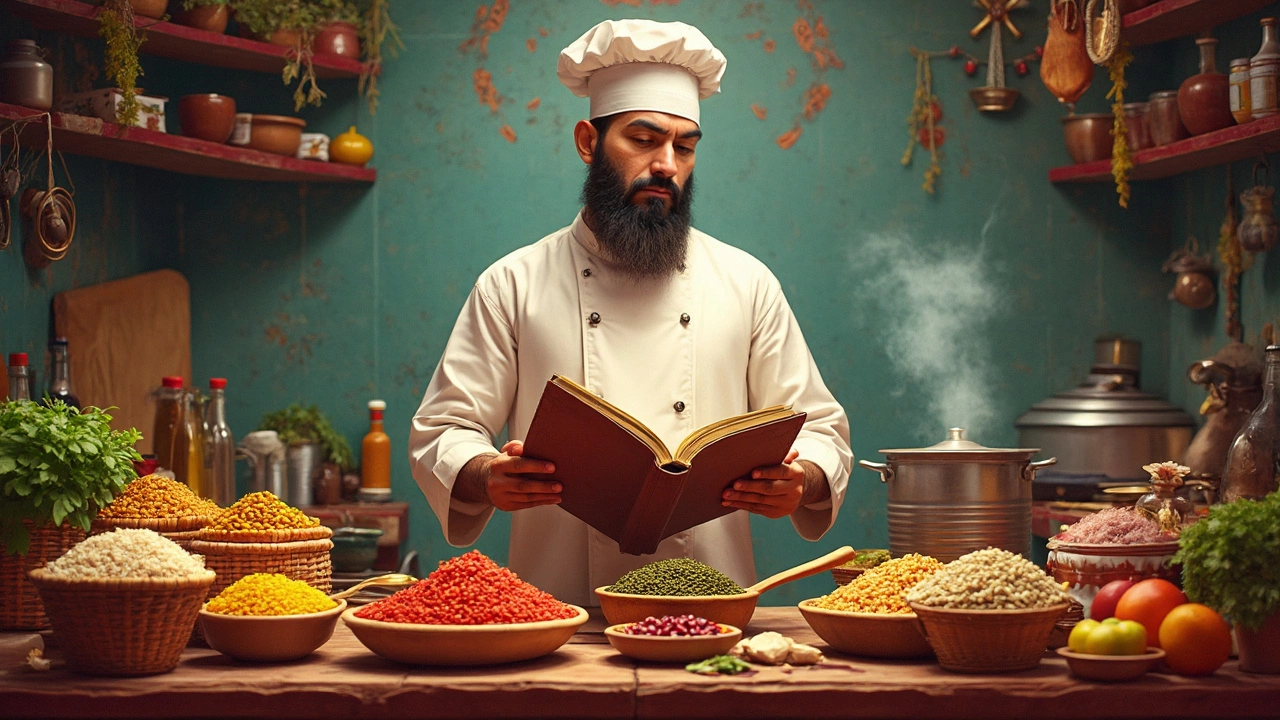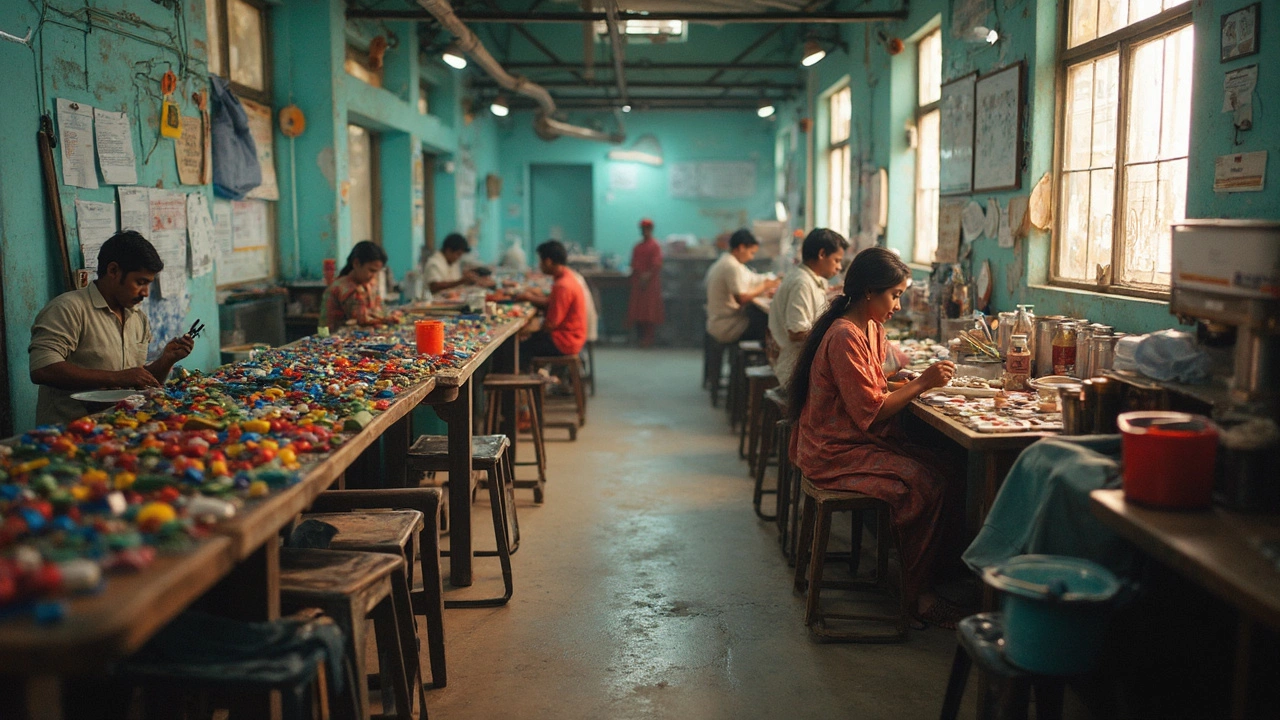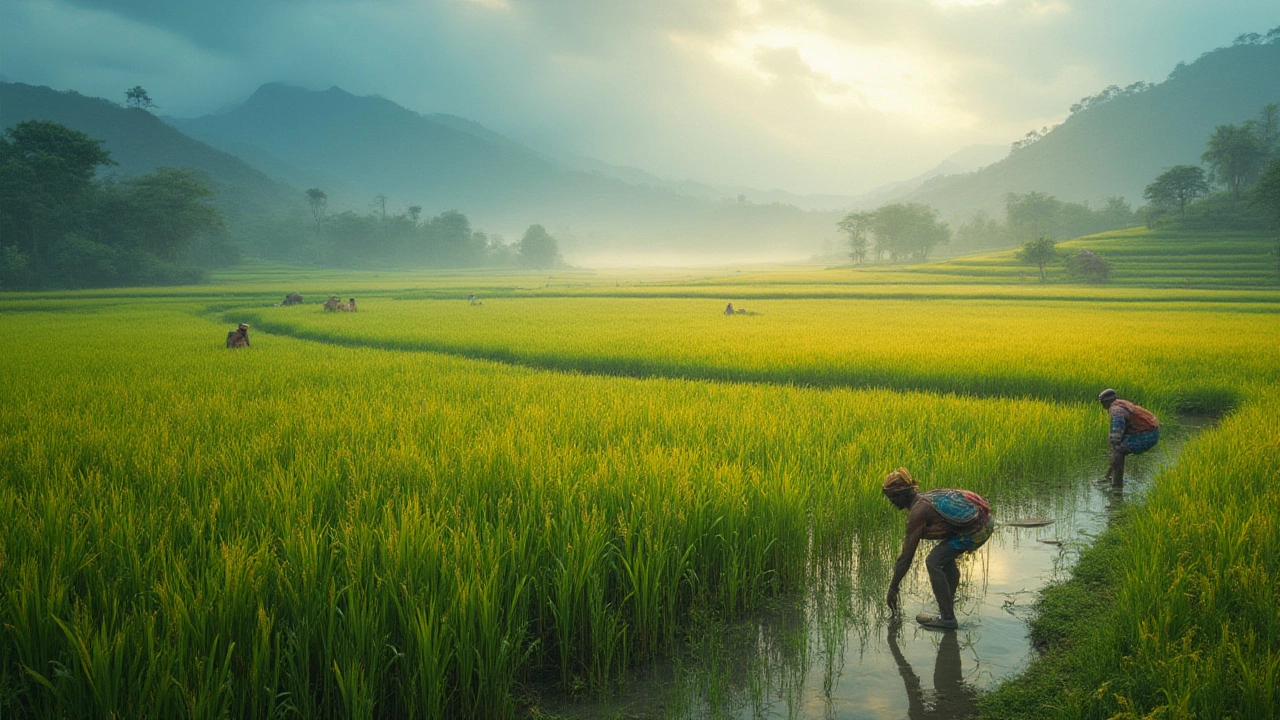Most Sustainable Vegetable to Grow: What Actually Works
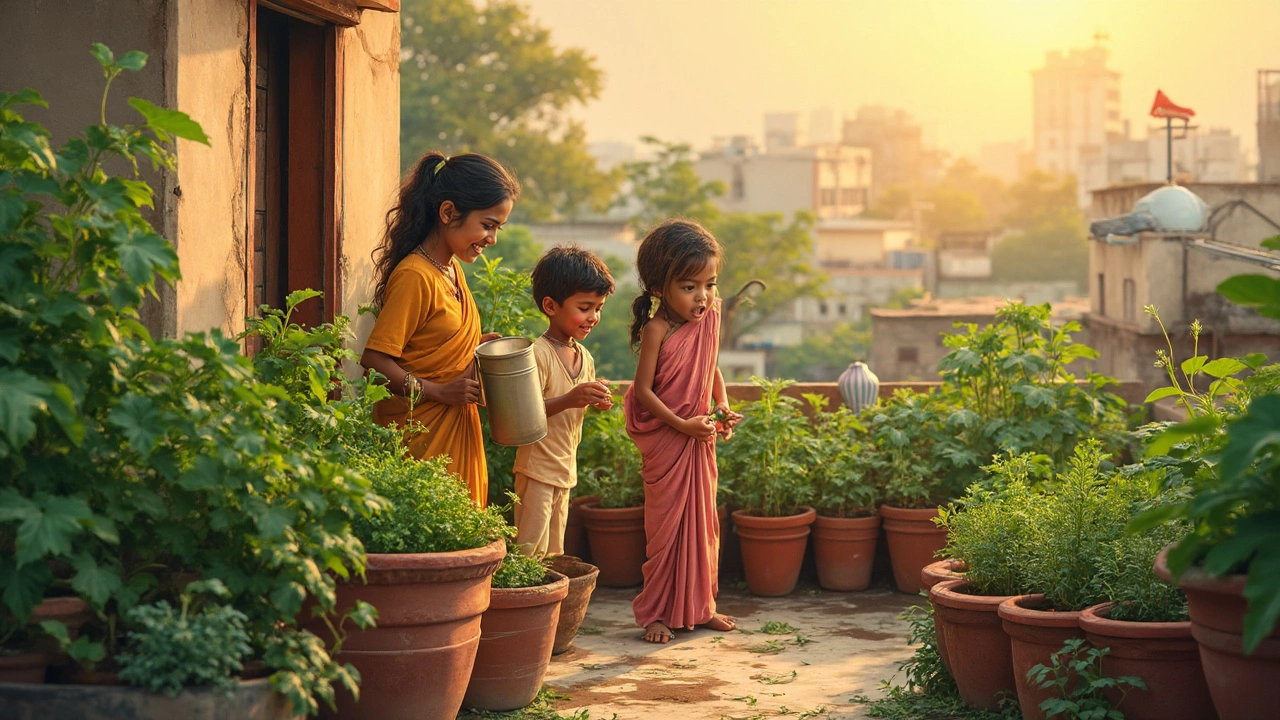
If you’ve ever looked at your grocery bill and wondered why bagged spinach or plump tomatoes keep burning a hole in your wallet, here’s a secret: some veggies are way easier on the earth—and your budget—than others. Not every plant is worth the sweat or water, especially if you care about the planet. So, if you want to grow your own food without chewing through resources, you need to look past those Instagram-perfect lettuces and focus on what actually gives the best bang for your buck… and conscience.
Here’s some tough love—classic garden picks like lettuce and cucumbers are thirsty. They gobble up water, struggle in heat, and honestly, you’ll probably watch them wilt if you miss two days with the watering can. On the flip side, certain veggies are practically bulletproof, bouncing back from neglect and still offering a solid harvest without sucking your tap dry.
One green contender always stands tall when people talk about sustainability: beans. String beans, bush beans, runner beans—whatever kind you pick, they’re real survivors. They fix their own nitrogen, grow fast, and rarely fuss about the dirt or weather. If eating with the seasons and sweating less over water bills sounds appealing, beans should shoot to the top of your garden wishlist.
- What Makes a Vegetable Sustainable?
- The Real Winner: Beans
- Close Contenders (And Why They Score Points)
- How to Grow Beans Like a Pro
- Low-Impact Gardening Hacks
- Using and Storing Your Harvest
What Makes a Vegetable Sustainable?
If you’re thinking about sustainable gardening, you have to look at more than how easy a vegetable is to grow. Sustainability goes wider—it’s about how a plant handles resources, its impact on soil, how much food it churns out, and even how far it has to travel to hit your plate. Not every vegetable plays nice with the planet, even if it looks great in garden catalogs.
Here’s what you really want to measure when you call a vegetable "sustainable":
- Water use: Can the plant deal with dry spells, or does it beg for constant watering?
- Fertilizer needs: Does it fix its own nutrients (like beans) or need extra boosts?
- Pest resistance: Can it stand up to bugs without chemical sprays?
- Soil health: Does it leave the dirt better or worse after you harvest?
- Yield versus effort: How much food do you actually get for the space and effort?
Strangely, some trendy veggies score low when you line them up by these factors. Lettuce, for example, is a water hog and doesn’t give big harvests. Tomatoes can drain nutrients and need constant pest control. Beans, though, actually feed the soil by converting nitrogen from the air into a usable form—so your dirt gets healthier each season you plant them.
If you want numbers, check out this quick breakdown comparing common vegetables:
| Vegetable | Water Needed (liters/kg) | Nutrient Inputs | Yield (kg/m²) | Pest Resistance |
|---|---|---|---|---|
| Beans | 400 | Low | 1.5 | High |
| Lettuce | 250 | Medium | 1.2 | Low |
| Tomatoes | 214 | High | 1.9 | Medium |
| Potatoes | 287 | Medium | 2.5 | Medium |
It’s not just about avoiding waste. Picking the right veggies means your garden is easier to run, costs less, and gives you more food—with less sweat and guilt about your eco-footprint.
The Real Winner: Beans
Here’s where it gets real—if you want a veggie that checks almost every sustainability box, beans take the gold. When folks rank veggies for sustainability, beans always land at the top. They don’t just survive in different climates; they fix nitrogen in the soil, slashing your need for chemical fertilizers. Translation: healthier dirt and less junk washing into rivers or lakes. That’s a win for your backyard and way beyond.
Most bean plants aren’t picky about soil, though they do love it loose and a bit rich. Bush beans grow virtually anywhere, pole beans climb for sun with any fence or trellis, and even dry beans (like black or kidney) need little fuss. But what really blows me away? Beans use less water than popular veggies like tomatoes or lettuce. Here’s a glance at how they stack up on key sustainability points:
| Veggie | Water Needed per Week (L/m²) | Nitrogen Fixer? | Harvest Time |
|---|---|---|---|
| Green Beans | 8-10 | Yes | 50-60 days |
| Lettuce | 15-20 | No | 30-45 days |
| Tomatoes | 20-25 | No | 60-80 days |
| Peas | 10-15 | Yes | 55-75 days |
Look at those numbers—sustainable gardening doesn’t always mean picking veggies that grow fast. Beans may take a few extra days compared to lettuce, but you save loads on water and skip the pricey fertilizers. Their deep roots keep the soil loose and healthy for later crops, too. If you’re rotating beds or mixing up what you plant each season, beans are like a free soil upgrade.
One more thing: You usually get a lot more food per plant with beans. Even if you’re short on space, a small patch can supply plenty for fresh eating, freezing, or sharing with neighbors. And when you let a few pods mature fully, you’ve got free seeds for next year. That’s classic sustainability—feeding you now, setting up for the future, and never asking for a ton of extra work.
Close Contenders (And Why They Score Points)
Beans take the crown, but a few veggies come really close in the sustainable gardening race. These plants manage to thrive with barely any drama, stretch resources, and feed you well. Let's talk about the ones that almost steal the spotlight—and why they deserve some space in your yard or balcony pots.
- Kale: Tough enough to survive a cold snap or a hot spell, kale takes minimal effort. It keeps growing even after you start picking the outer leaves. It's basically a plant that patches itself up.
- Swiss chard: Like kale, chard keeps giving. You can snip a handful of leaves, and it’ll bounce back week after week. Plus, this one tolerates poor soil and irregular watering.
- Tomatoes (cherry types): They sound high-maintenance, but small varieties like cherry tomatoes actually do well in less-than-perfect conditions. They offer buckets of fruit from a single plant, and you can grow them in pots if you’re tight on space.
- Zucchini: One plant can go wild (sometimes too wild), giving enough squash for your family and then some. Zucchini shreds weeds with its dense leaves and needs little pampering.
- Sweet potatoes: They love heat, handle drought, and don’t fuss about soil. Even a small patch cranks out a load of sweet, filling tubers and a bonus crop of tasty greens.
Here’s how these contenders stack up on sustainability basics:
| Veggie | Water Needs (per season) | Harvest Time | Yield per Plant | Resists Pests/Disease |
|---|---|---|---|---|
| Kale | Low | 60 days (first harvest) | Up to 2-3 kg/year | High |
| Swiss chard | Low | 50 days | 1.5-2 kg/year | High |
| Cherry tomatoes | Medium | 55-70 days | 3-4 kg/season | Medium |
| Zucchini | Medium | 45-60 days | 4-7 kg/season | Medium |
| Sweet potatoes | Low | 90-120 days | 2-3 kg per plant | High |
The takeaway? If space or variety matter to you, these close contenders do the job while still keeping things green and easy. Rotate them with beans, and you’ll barely notice higher water bills—or wasted effort.
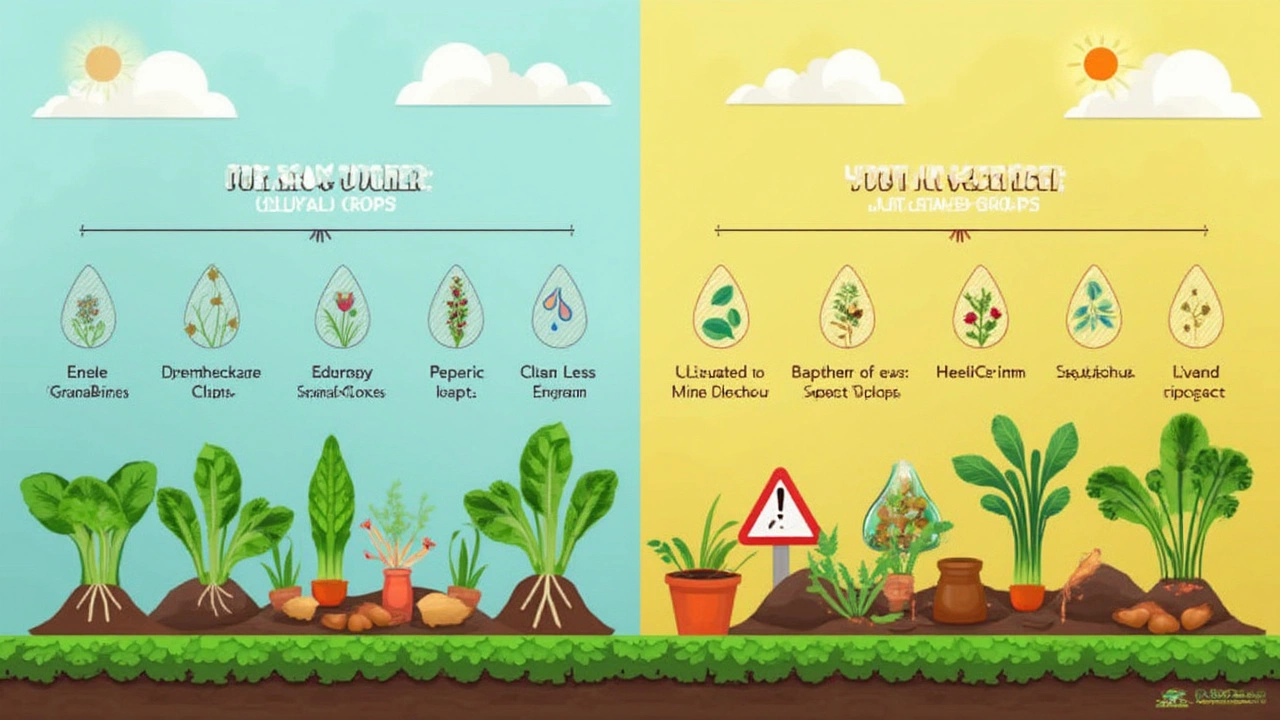
How to Grow Beans Like a Pro
Beans are about as close to set-it-and-forget-it as you get with veggies. They don’t need fancy soil, just a sunny spot and a bit of space. If your garden gets at least six hours of sun, you’re good to go. Here’s how to get a bumper crop without stressing out:
- Sustainable gardening tip: always choose non-GMO, untreated seeds. Classic varieties like Blue Lake or Provider work in most backyards.
- Sow bean seeds directly in the ground after the last frost—don’t bother starting them indoors. Cold, wet soil just rots the seeds.
- If you’re growing pole beans, make sure to throw up a simple trellis, bamboo poles, or even some old sticks. Bush beans don’t need support and are more compact.
- Plant seeds about an inch deep and 3-4 inches apart for bush beans. Keep the rows about 18-24 inches apart so you can walk between them. For pole beans, space seeds 4-6 inches apart around your chosen supports.
- Once they sprout, water when the top inch of soil looks dry. Beans really don’t like soggy roots, so don’t overwater.
Here’s a quick cheat sheet for key facts and numbers:
| Type | Days to Harvest | Avg. Water/Week | Yield per 10 ft Row |
|---|---|---|---|
| Bush Beans | 50-60 | 1 inch | 4-5 lbs |
| Pole Beans | 60-70 | 1 inch | 7-10 lbs |
Beans aren’t heavy feeders. They grab their own nitrogen from the air, so skip the fancy fertilizers. If you’re using compost, that’s enough. Plus, beans play nice with other crops—try planting them alongside corn or squash for that classic "three sisters" setup.
Keep an eye out for bean beetles and slugs, but most pests steer clear of healthy plants. If things look buggy, a quick hand-pick in the evening or a bit of neem oil does the trick. Once beans start producing, pick them every couple of days to keep new pods coming. No rocket science here—the more you pick, the more you get.
Low-Impact Gardening Hacks
If you want your garden to work smarter, not harder, you’ll need a few tricks up your sleeve. Saving water, time, and energy is the name of the game, especially with our summers getting hotter and rainfall acting like an unpredictable guest.
The top move for sustainable gardening is ditching the daily hose routine. Install a drip irrigation system or use soaker hoses. These deliver water straight to the roots where it matters, without waste. If you’re a fan of going low-tech, just collect rainwater with barrels—one good storm can fill a couple of buckets, especially if you hook it up to a roof downspout.
Mulching is another must. Just spread a layer of shredded leaves, straw, or grass clippings around your plants. This keeps the soil cool, locks in moisture, and even blocks out some weeds. You’ll end up watering way less—sometimes 25% less water is needed compared to bare soil, especially during peak summer.
Let’s talk fertilizer. Beans and other legumes do half the work themselves by making their own nitrogen. But if you want a boost, skip the chemical stuff. Homemade compost or well-rotted manure not only feeds the plants but keeps your soil healthier for years down the line.
Here’s a pro move: grow your veggies close together. Dense planting shades the soil so it stays moist and weeds struggle to take hold. You get more food per square foot, and it’s easier on your knees too—less weeding, less work. For example, a 4x8-foot raised bed can easily churn out enough beans for a family of four all summer, if you use tight spacing and succession planting.
Check out this quick table for smart swaps to lower your garden’s impact:
| Garden Need | Traditional Way | Low-Impact Swap |
|---|---|---|
| Watering | Sprinklers | Drip irrigation or rain barrels |
| Weed Control | Chemical killers | Mulch or hand-pulling |
| Fertilizer | Synthetic chemicals | Homemade compost |
| Pest Control | Spray pesticides | Row covers or companion planting |
Honestly, these swaps aren’t just great for the planet—they’ll probably save you more cash and give you better veggies, too.
Using and Storing Your Harvest
So your plants are pumping out more beans than your family can eat in one sitting. Good problem, right? No point in letting all that hard work go to waste. There are easy ways to keep those beans—and nearly any sustainable garden haul—fresh and tasty well beyond harvest time.
Sustainable gardening isn’t just about how you grow, but how little you waste. Fresh beans keep in the fridge for a week, tops. The real magic is in storage and using every last pod.
- Freezing: This is hands-down the simplest method. Wash and trim your beans, blanch ‘em in boiling water for 2-3 minutes, then plunge them into ice water. Dry them off, toss in freezer bags, and you’re set for months. According to the USDA, frozen beans hold up in the freezer for 8-12 months without a hitch in quality.
- Pickling: Beans make killer pickles. All you need is vinegar, salt, some garlic, and maybe chili if you like a kick. Sterilize jars, pour in the brine and beans, screw on the lids, and store in a cool, dark place. They’ll last for several months.
- Canning: If you’re up for a little effort, canning is another way to bank beans for the winter. The key here: use a pressure canner, especially with low-acid veggies like beans. Follow guides from trusted sources like the National Center for Home Food Preservation, so your beans are safe to eat.
- Dehydrating: Drying beans isn’t just for preppers. You can slice green beans, dry them with a dehydrator or even oven on its lowest setting, and you’ll end up with crunchy snacks or soup ingredients.
Don’t forget to eat fresh, too. Beans work in stir-fries, curries, salads, and even tossed onto pizza. I love making a quick salad with blanched beans, cherry tomatoes, olive oil, and lemon—Priya and I snack on it straight out of the bowl.
Curious about how long you can store veggies with different methods? This table has the lowdown:
| Storage Method | Beans Last For |
|---|---|
| Refrigeration | 7 days |
| Freezing | 8-12 months |
| Pickling | 3-6 months |
| Canning | 1 year |
| Dehydrating | 12+ months (if kept dry) |
However you decide to stash your harvest, label your containers with dates. Nothing’s worse than mystery bags in the freezer. You’ll thank yourself when next season rolls around and you’re still eating homegrown beans.


